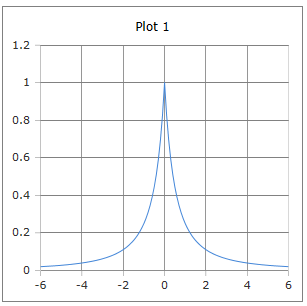Calculate Derivative Softsign Function
Online calculator for computing the derivative of the Softsign function - Gentle gradient function for neural networks
Softsign Derivative Calculator
Softsign Derivative
The softsign'(x) or Softsign derivative is a gentle gradient function for stable training of neural networks.
Gentle Bell-shaped Curve

Curve of the derivative Softsign function: Gentle bell curve with maximum at x = 0.
Properties: Maximum 1 at x = 0, always positive, slower decline than Sigmoid.
|
|
Why is the Softsign derivative gentler?
The gentle bell shape of the Softsign derivative offers advantages for training neural networks:
- Slower decline: Less abrupt gradient changes
- Always positive: No negative gradients
- Symmetry: Uniform shape left and right
- Gentle saturation: Fewer vanishing gradients
- Computationally efficient: Simple calculation
- Stability: Better numerical properties
Gentle gradients for stable training
The simple form softsign'(x) = 1/(1+|x|)² makes computation efficient and stable:
The gentle derivative leads to more uniform gradient flows and more stable convergence compared to other activation functions.
Softsign Derivative Formulas
Basic Formula
Simple rational function
Symmetry
Even function
Piecewise Form
Split representation
Chain Rule Form
For composite functions
Maximum Property
Maximum at x = 0
Properties
Special Values
Domain
All real numbers
Range
Between 0 and 1
Application
Backpropagation, gentle gradients, stable training, alternative to Sigmoid derivative.
Asymptotic Behavior
Approaches 0 for large |x|
Detailed Description of the Softsign Derivative
Mathematical Definition
The derivative of the Softsign function is a gentle, bell-shaped function that plays an important role in training neural networks. It offers a computationally efficient alternative to other activation derivatives.
Using the Calculator
Enter any real number and click 'Calculate'. The derivative is defined for all real numbers and has values between 0 and 1.
Historical Background
The Softsign derivative evolved as part of the search for better gradient functions for neural networks. It was proposed as a gentle alternative to steeper derivatives like the Sigmoid derivative.
Properties and Applications
Machine Learning Applications
- Backpropagation in neural networks
- Gentle gradient computation
- More stable training than steep derivatives
- Alternative to Sigmoid derivative
Computational Advantages
- Simple rational function
- No exponential functions required
- Numerically stable for all inputs
- Lower computational cost than Sigmoid derivative
Mathematical Properties
- Maximum: softsign'(0) = 1 at x = 0
- Symmetry: softsign'(-x) = softsign'(x)
- Monotonicity: Monotonically decreasing for |x| > 0
- Positivity: Always positive
Interesting Facts
- The simple form makes backpropagation very efficient
- Maximum of 1 at x = 0 means strongest learning rate at center
- Gentler decline than Sigmoid derivative reduces vanishing gradients
- Always positive values avoid sign-switching problems
Calculation Examples
Example 1
softsign'(0) = 1
Maximum of derivative → Strongest learning rate
Example 2
softsign'(1) = 0.25
Medium input → Moderate learning rate
Example 3
softsign'(3) ≈ 0.063
Large input → Gentle damping
Comparison with Other Derivatives
vs. Sigmoid Derivative
Softsign' vs. σ'(x) = σ(x)(1-σ(x)):
- Higher maximum (1 vs. 0.25)
- Gentler decline for large |x|
- Simpler calculation
- Fewer vanishing gradients
vs. Tanh Derivative
Softsign' vs. 1 - tanh²(x):
- Same maximum of 1
- Slower saturation
- No exponential functions
- Better numerical stability
Advantages and Disadvantages
Advantages
- Simple, efficient calculation
- Higher maximum than Sigmoid derivative
- Gentler gradient decline
- Always positive values
- Numerically stable
- Fewer vanishing gradients
Disadvantages
- Less widespread than Sigmoid/Tanh derivatives
- Can still saturate in very large networks
- Slower than ReLU (constant derivative)
- Limited empirical studies
- Not as aggressive as modern activations
Impact on Training
Gradient Flow
The gentle form leads to more stable gradients:
More uniform weight updates through gentle derivative.
Convergence
Properties of convergence:
- More stable convergence than steep derivatives
- Fewer oscillations in training
- More uniform learning rate over time
- More robust to hyperparameter choices
|
|
|
|